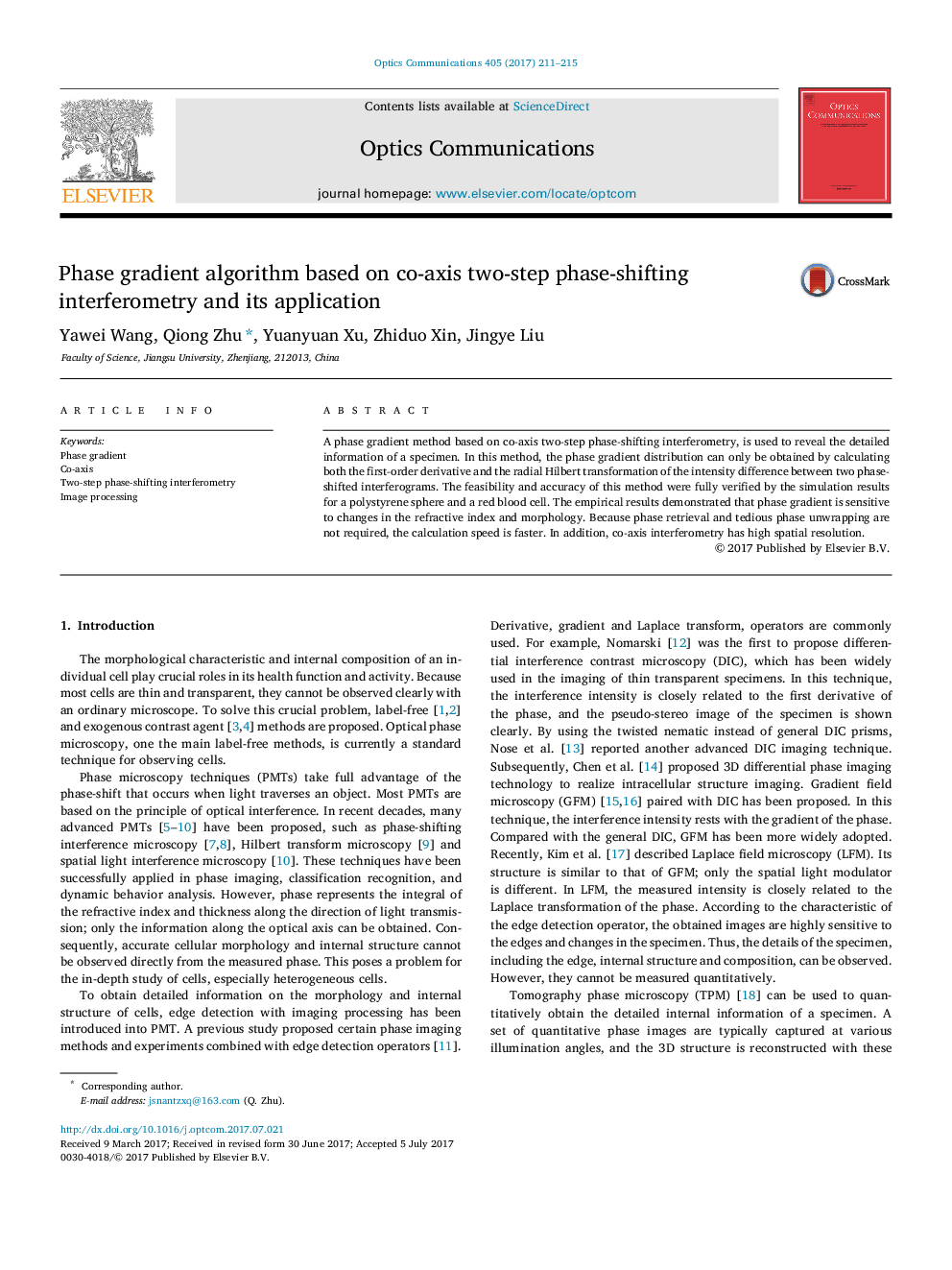| Article ID | Journal | Published Year | Pages | File Type |
|---|---|---|---|---|
| 5449135 | Optics Communications | 2017 | 5 Pages |
Abstract
A phase gradient method based on co-axis two-step phase-shifting interferometry, is used to reveal the detailed information of a specimen. In this method, the phase gradient distribution can only be obtained by calculating both the first-order derivative and the radial Hilbert transformation of the intensity difference between two phase-shifted interferograms. The feasibility and accuracy of this method were fully verified by the simulation results for a polystyrene sphere and a red blood cell. The empirical results demonstrated that phase gradient is sensitive to changes in the refractive index and morphology. Because phase retrieval and tedious phase unwrapping are not required, the calculation speed is faster. In addition, co-axis interferometry has high spatial resolution.
Related Topics
Physical Sciences and Engineering
Materials Science
Electronic, Optical and Magnetic Materials
Authors
Yawei Wang, Qiong Zhu, Yuanyuan Xu, Zhiduo Xin, Jingye Liu,
